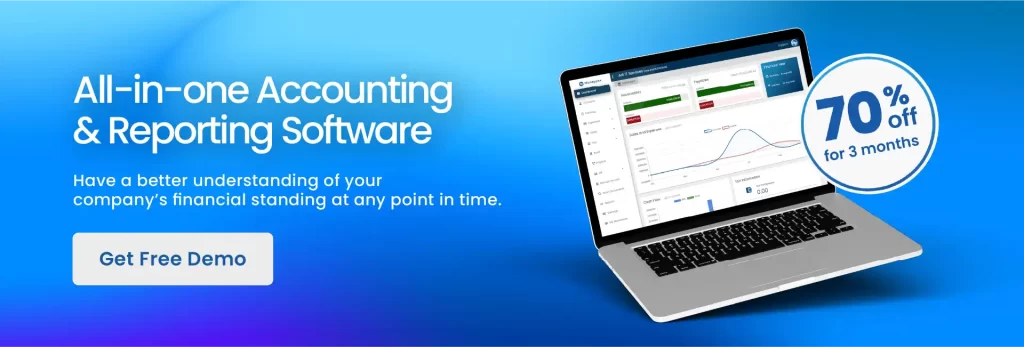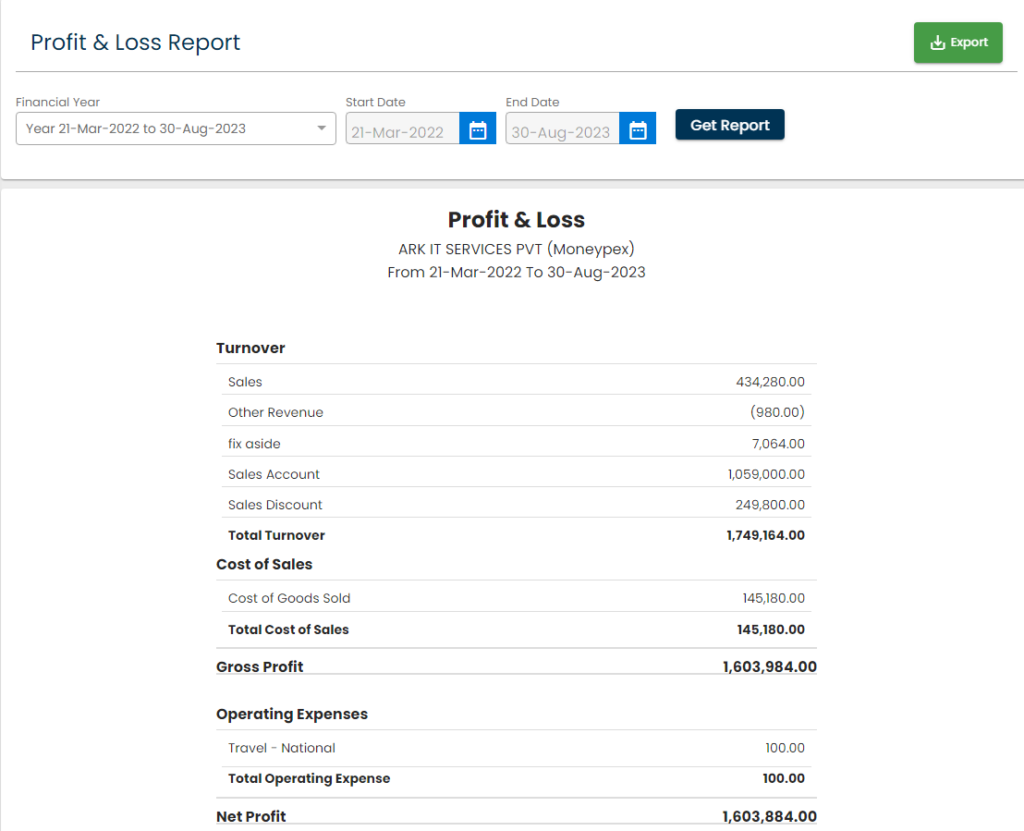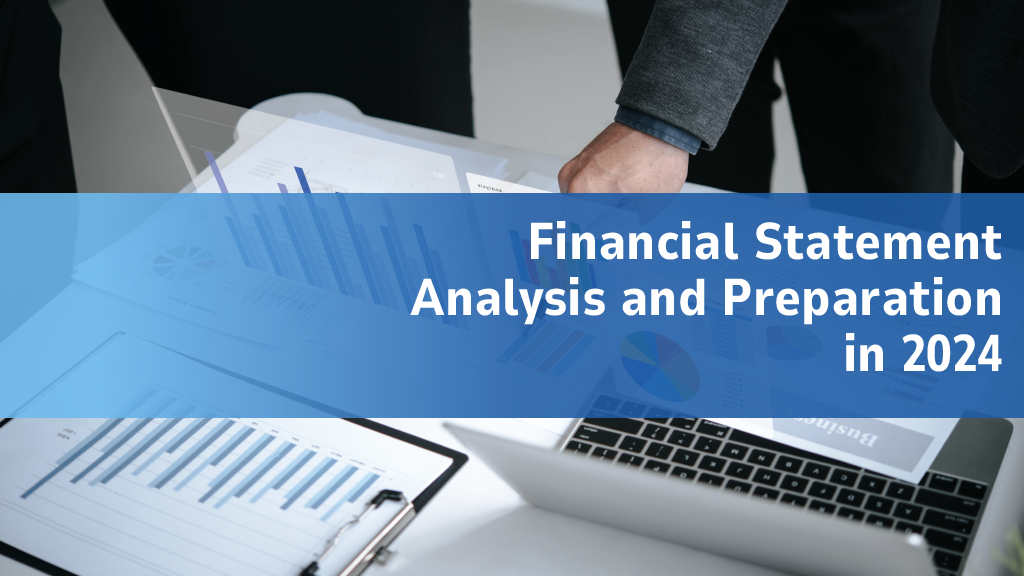Why financial statement analysis and preparation are crucial for your business, and how to do it? When it comes to determining the success of your company, nothing provides a clearer picture than a comprehensive view of the statistics.
Knowing your company's financial health can help you make short- and long-term decisions. If you can examine how the balance sheet and profit loss statement relates to other financial statement analysis and how current assets, accounts payable, current liabilities, and long-term liabilities affect your company's bottom line, you can boost cash flow and profitability.
Table of Contents
- How to Analyze Financial Statements?
- What are The Different Types of Financial Statement Analysis?
- What is an Example of Financial Statement Analysis?
- Common Financial Statements
- How to Analyze Profit & Loss Statement
- Balance Sheet & Profit/ Loss Statements in Moneypex
Ever wondered how investors and other stakeholders determine a company's financial health before they invest in it?
Investors analyze financial statements like balance sheets, income statements, trial balances, etc before investing in a company. As these reports are the best way to learn about any business from the ground up. So, financial statement analysis is not only necessary for a company’s internal knowledge but also for attracting investors.
How to Analyze Financial Statements?
Preparing and analyzing financial statements is crucial for every business and it involves a comprehensive examination of a company's financial data to evaluate its financial performance and health. Here are some steps you can follow to conduct a thorough financial statement analysis:
- Gather financial statements
Collect the company's financial statements, including the balance sheet, income statement, and cash flow statement.
- Review financial data
Examine the financial data within each statement to gain an understanding of the company's financial performance over time. Look for trends, patterns, and any significant changes from one period to another.
- Conduct horizontal analysis
Perform a horizontal analysis by comparing financial data from one period to another. This can help identify trends and patterns in a company's financial performance.
- Conduct vertical analysis
Perform a vertical analysis by comparing different items within a single financial statement. This can help identify how a company allocates its resources and whether it is operating efficiently.
- Perform ratio analysis
Use financial ratios to evaluate the company's financial performance. Ratios can provide insights into a company's liquidity, profitability, solvency, and efficiency.
- Interpret results
Analyze the financial statements and ratios to gain insights into the company's financial health and performance. Use this information to make informed decisions about whether to invest in or lend to the company.
What are The Different Types of Financial Statement Analysis?
There are three main types of financial statement analysis: horizontal analysis, vertical analysis, and ratio analysis.
Horizontal Analysis
It involves comparing financial data from one period to another, such as comparing a company's revenue in 2020 to its revenue in 2019. This type of analysis can help identify trends and patterns in a company's financial performance.
Vertical Analysis
It involves comparing different items within a single financial statement, such as comparing the percentage of revenue represented by the cost of goods sold. Financial statement analysis can help identify how a company allocates its resources and whether it is operating efficiently.
Ratio Analysis
It involves using financial ratios to evaluate a company's financial performance. Ratios can provide insights into a company's liquidity, profitability, solvency, and efficiency. Some commonly used ratios include the current ratio, the debt-to-equity ratio, and the return on assets ratio.
What is an Example of Financial Statement Analysis?
An example of financial statement analysis might involve analyzing the reports of a retail company. The horizontal analysis might show that the company's revenue has been increasing steadily over the past three years. The vertical analysis might reveal that the company has been allocating a larger percentage of its resources to marketing and advertising, which could explain the increase in revenue.
Ratio analysis of a financial statement analysis might reveal that the company has a high debt-to-equity ratio, which could indicate that it is heavily reliant on debt financing. However, the company's return on assets ratio might also be high, which could suggest that the company is effectively using its assets to generate profits.
Common Financial Statements
Let's examine these financial statements in a fresh light to get a deep grasp of your business.
Balance sheet
What is balance sheet? A simple balance sheet provides a true and fair view of your business entity’s financial position. It shows your company's assets, liabilities, and shareholder's equity at a particular time.
Preparing and analyzing financial statements also give investors an idea of a company's financial structure while also allowing them to calculate return rates. Moreover, a balance sheet can show where and how your company's equity (net worth), long-term assets, and current percentage of long-term debt line up.
It is common for business owners to use reporting software to generate income statements that are the primary metrics for measuring the health of their company's finances. Since no business can work properly without sufficient funds, this factor may even be more critical than company profits.
Balance sheet example:
The balance sheet below shows ABC company’s balance sheet. It consists of fixed and current assets, short-term and long-term liabilities, capital, and reserves.

- Assets
Everything that a company owns or can generate cash can be included in assets. A balance sheet lists account in decreasing order of their ability to be converted into cash.
- Liabilities
Liabilities refer to the money that the company owes to third parties, it can be money, bank Indebtedness, pension fund, etc.
- Capital and reserves
The difference between balance sheet assets and liabilities is capital and reserves. It represents an entity's owners' equity and can withstand unidentified losses.
How Do Balance Sheets Help in Taxation?
Taxes on sales are typically shown as current liabilities on the balance sheet. Expenses due in the next 12 months or less are referred to as "current liabilities." Because the tax is a percentage of total sales, they are both paid directly to the government and depend on how much product or service is sold. In most cases, these taxes are deducted from your account each month. Thus, the automatic calculation of tax in the balance sheet of HMRC approved accounting software helps Making Tax Digital and file VAT returns on time.
And you don’t have to worry if HMRC and FRC( Financial Reporting Council) audits your company. Taxes on sales and use vary from state to state, as well as the type of product being sold.

Profit & loss statement
The profit and loss statement provides you with a categorical breakdown of your revenue and expenses. Ultimately, this gives you a clear depiction of profits and losses. It is also called the "income statement" or "statement of revenue and expense."
This is the best source of information about a company's stock value or creditworthiness. Because it provides you with background information on the company's history.
By financial statement analysis, you can figure out if your revenue is greater than your expenses and if you're making a profit. Profit-and-loss statements show if you're in black or red.
Profit & Loss Statement Example:
Turnover, sales, expenses, and net profit make up the four main sections of a profit and loss statement.

- Total turnover
“Turnover” is the total sales made by a business in a certain period. It's sometimes referred to as “gross revenue” or “income”.
- Cost of sales
Amounts received are referred to as "total cost of sales." This is what your customers are paying you.
- Total expenses
Costs associated with running a business are referred to as "expenses." That's what you're paying other people and businesses to do their work for you.
- Net income or profit
The difference between total income and total expenses is your net profit.
How to Analyze Profit & Loss Statement
- Yearly comparison: You can do a comparison by years to spot some sharp changes like a drop in sales, or a rise in expenses.
- Analyze trends: It determines if your strategies are paying well to increase revenue or not.
- Sales and expenses: Find out your standout months in sales and how you can reduce big expenses.
Balance Sheet & Profit/ Loss Statements in Moneypex
Moneypex is the best reporting software for small businesses to take a whole overview of their business at a glance.

Making a balance sheet and profit loss statement in Moneypex is as simple as going to reports and then clicking on whichever report you want to generate automatically. Customize your balance sheet by altering its reporting interval or better financial statement analysis. The balance sheet of a given accounting period can be exported to Excel as well.
Do you find these reports to be a valuable source of information? Then sign in with Moneypex or get a free demo to have a better understanding of your company’s financial standing at any point in time.
Moneypex
Moneypex team is here to give you the best tips for starting, running, or growing your small business. Written for self-employed individuals and small business owners, Moneypex provides insights into the latest trends and expert advice.
